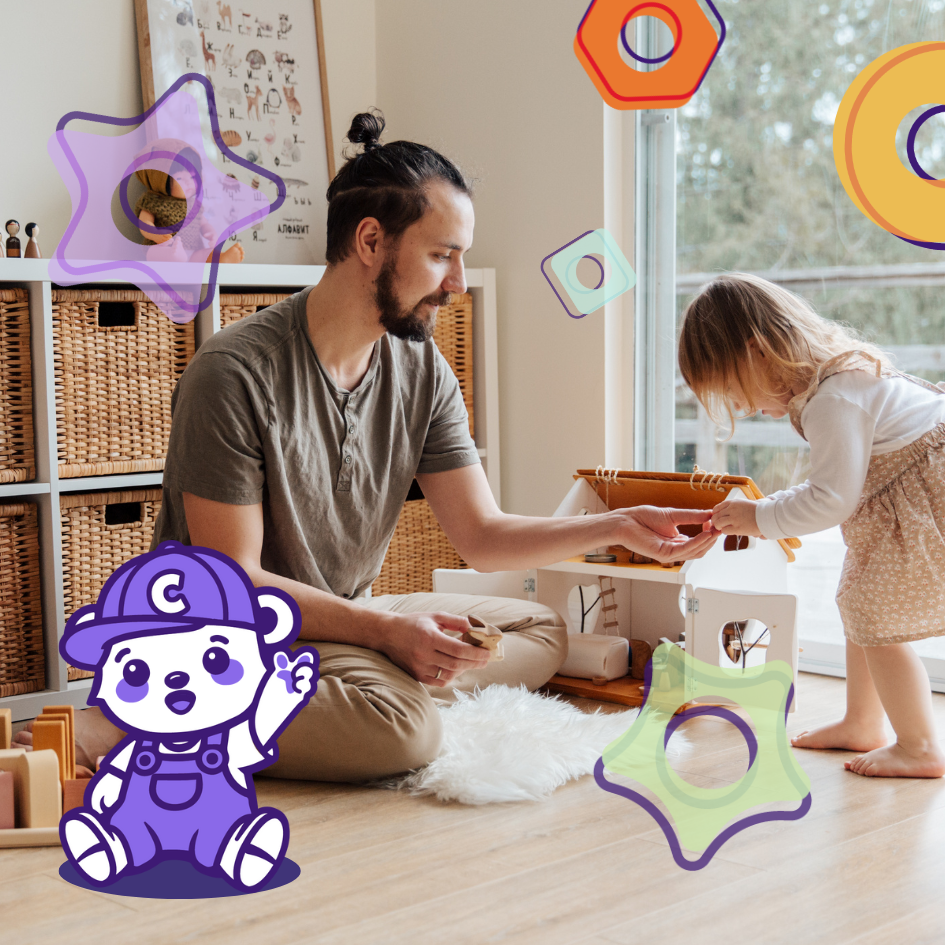Is Your Home Fire-Safe? Making Sure Your Kids Are Safe In Case Of A Fire
What’s your biggest fear in terms of parenting and safety?
I admit: My ultimate nightmare scenario is being stuck in the middle of a housefire. This fear is amplified knowing that if this should happen, my kids are stuck in this dangerous situation with me.
Stop, drop, and roll. As kids ourselves, we learned those crucial words in elementary school. We practiced our rolling, we got our red plastic fireman hats and our fire-safety stickers, and we’ve never forgotten the lesson - or the sound of the fire truck sirens and flashing lights. Luckily, most of us have never had to put our skills to the test.

Now, as a parent, if your worst nightmare is the same as mine, keeping your kids safe is a top priority. So let’s talk about fire safety in your home.
- Is your home equipped properly in the case of a fire?
- Would you be ready to escape if you suddenly smelled smoke in the middle of the night?
- Would your children know what to do if they suddenly heard the piercing shriek of a fire alarm?
- Would you be prepared to get your baby and toddler safely out of the fire’s reach?
A home fire is reported every 88 seconds, according to the National Fire Protection Association.
In recent years, smoking has been the leading cause of house fire deaths. But let’s assume you’re not smoking with children in the house, and move on to other causes. Cooking is the leading cause of house fires and injuries, and heating equipment comes in as a close second. One in every five deaths occurring in a house fire is caused by these two factors.
It’s a hard topic to think about. But… what if? What if you suddenly find yourself in that unpredictable situation. And, of course, you’re a parent now. Ah, yes, life with kids. Suddenly things like fire safety take on an entirely new meaning, and you can never be too careful.
It’s time to check on all those little details you may have let slide over the years. As my kids get older we’ll be sure to fit each with the safest big-kid bed rails. Both promote safety in the home in general.
What about the rest of the home, though? The less exciting, more utilitarian details everyone has in their house.
Here are a few facts, along with simple actionable steps, to help you prepare your house for the worst nightmare that will (hopefully) never occur.
First line of defense - preparing the premises
Do you have smoke alarms in your home? Are they installed properly? Are the batteries fresh?
Smoke alarms give an early warning of fire danger. Most importantly, they allow for ample time to vacate the premises. Make sure to check your alarms and change batteries on a regular basis. Many people schedule fire alarm checks to coincide with daylight savings time or the first day of each month. Old or dead batteries cause 25 percent of all alarm failures.
Smoke alarms should be installed in each wing of your home. You need one on every level of the house. If you have a shed, garage, or another outbuilding, install an alarm there, too.
Dust away cobwebs on a regular basis, and never disable a smoke alarm -- even when you accidentally burn your toast. I know it’s annoying when a fire alarm goes off at the most inopportune time, such as when you’re cooking or when you’ve set your oven to self-clean.
In those instances, simply use the attached hush button. All smoke alarms have them. Before you forget, take a look at the model you currently have. Familiarize yourself to how it works. This way, if you ever need to turn it off again, you won’t pull the alarm’s batteries out in frustration, and then forget to reinstall them.
Even if your kids are little, they should be familiar with what a smoke alarm is, and how it sounds. Teach your children what your smoke alarm sounds like and exactly what to do when they hear it go off. I introduced the concept of home safety in case of a fire to my son through games and pictures.
We watched the following video, which helped as well:
https://www.youtube.com/watch?v=8OVHhkqpZf8
Remember, an alarm that is turned off or sporting dead batteries is not going to help you in the actuality of an emergency.
Do you know where your extinguisher is? Can you locate it right now? Do your kids know where it is, too?
One of the most disconcerting scenarios is knowing you have something, but not remembering where you put it or how to use it once you find it. Does this sound familiar?

This is often the case with a fire extinguisher. Imagine you’ve smelled smoke. You quickly make sure everyone is out of the house, your partner is currently calling 9-1-1, and you’re trying desperately to remember where you put the fire extinguisher. In that case, you’re not alone. I’ll admit: Until recently, I also didn’t really pay attention to where my extinguisher was located. Not since we moved into our current home several years ago.
Although most homes have at least one fire extinguisher on premise, a bulk of homeowners have never used an extinguisher. In fact, many can’t remember the last time it was checked for an experation date. (Yes, fun fact: fire extinguishers do have a shelf life!)
That being said, fire extinguishers are very effective as a first line of defense against most small house fires. I encourage you to locate yours today. Now that you’re taking the time to locate it, make sure you actually know how to use it (read the directions - not all extinguishers work the same!) and check that expiration date. Once you’ve ensured it is up to par and you have a firm grasp on how your model operates, experts advise installing the extinguisher high on a wall, away from heat sources, and close to an exit.
Remember the word PASS - this simple acronym shared by the Red Cross is key to using a fire extinguisher:
Point the extinguisher at the base of the fire.
Aim low.
Squeeze the lever slowly and evenly.
Sweep the nozzle from side to side.
2. Careful in the kitchen
Unattended cooking is a leading factor in home fire deaths. The NFPA states that, “Home fires are more likely to start in the kitchen than any other room in your home.” And the U.S. Fire Administration statistics show that “every two-and-a-half hours someone is killed in a home fire.”

Life with kids is a challenge. You’re juggling work, cleaning, potty-training, and cooking - among other things. I understand how easy it is to get sidetracked. Maybe you accidentally leave the water boiling on the stove or forget that you turned the oven on to preheat a while ago. But when it comes to the kitchen, safety-first has to be your mantra. This is especially true if curious toddlers are in the mix.
Along with ensuring your home is equipped with the previously mentioned smoke alarms and fire extinguishers, here are a few of the steps recommended by the Red Cross to help fireproof your kitchen:
- Never leave food that is cooking unattended.
- Avoid wearing loose clothing while cooking.
- Remove anything that could catch on fire near the stovetop and oven.
- Consider creating a kid-free, three-foot perimeter around the stove and cooking areas.
Remember, a watched pot will actually boil.
3. Well-prepared Kids Are Safe Kids
Children under the age of five are twice as likely to die in a house fire. As devastating as those statistics are, they’re true. And, just as sad is the fact that many home fires are started by children playing with lighters and matches that were left in accessible places.
Here are a few basic reminders to help keep your little ones safe:
- Keep lighters, matches, and other flammables locked away and out of reach.
- Invest in child safety covers for electrical outlets and power strips.
- In the event of a fire, teach your children to stay low and get out of the house as quickly as possible.
- Practice escape routes with your child and make sure they have a safe place to go if they can’t find you.
Remember to buy lighters with child locks; even if they’re not as cool as your vintage Zippo.
4. When In Doubt, Get Out!
According to the American Red Cross if a fire starts in your home, you may have less than two minutes to escape -- that’s not a lot of time, especially if you haven’t already devised a plan for emergencies.

The U.S. Fire Administration recommends creating a Fire Escape Plan.
- Adults should have a specific action plan regarding whose responsibility it is to assist each young child and baby in the household.
- Make sure children know they should never hide from a fire - they need to get outside as soon as possible.
- Discuss a specific place - located a safe distance away from any danger - where your family members will gather once they have vacated the house.
- Practice this escape plan a minimum of once a month. Make sure to create several different scenarios of where the fire is located, and rehearse how you will handle the situation.
- Make sure the whole family, including toddlers and young children, are actively part of your practice drills. Nearly half of parents surveyed by the National Fire Protection Association report their children do not know what to do in the event of a fire.
Remember:
Is Your Home Fire-Safe?
So there you have it. A few quick, easy steps that you can use to start ensuring your home has an action plan in the unfortunate case of a fire. As your children grow up, be sure to include them in all plans and allow them to direct a few of your escape route rehearsals. While it may seem like a game to them, they will surely remember the time daddy stopped-dropped-and-rolled and the way mommy practiced climbing out the bedroom window.
Do you have a unique escape plan in case of a housefire? Did any of the above resources inspire your plan? Share your thoughts in the comments below.









Leave a comment